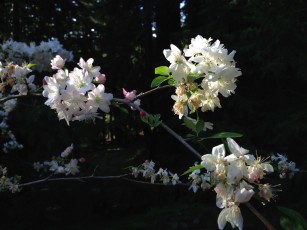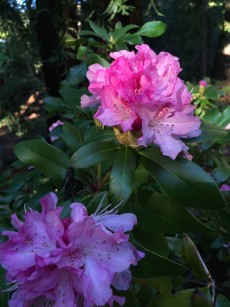California?s Arbor Day is celebrated on March 7th, in honor of famed horticulturist Luther Burbank?s birthday. The day is celebrated on different dates around the world because one of the features of Arbor Day is the planting of trees which is best done at certain times of the year. The simple goal of this day is to inspire people to plant, nurture and celebrate trees.

We are fortunate to live here in the Santa Cruz mountains in a temperate rain forest with lots of trees. Our redwoods are especially important in our biodiverse watershed as is all flora and fauna in the forest. Redwoods and many native trees keep our environment moist. Let?s make it a priority to protect them and pass the baton of stewardship to our children who will inherit this place.
So whether you’ve been thinking about planting a redwood, heritage oak or other native tree, a fruit tree to feed the family, a shade tree to save on summer cooling, a flowering tree to attract pollinators, or a tree to hang the hammock on this is a good time to plant as well as nurture and celebrate all trees..
Trees are remarkable in how they grow and adapt to their environment. Some trees, like redwood, ponderosa pine, sycamore and madrone have especially beautiful bark. This is the tree’s protection from the outside world. Continually renewed from within, it helps keep out moisture in rain and prevents the tree from losing moisture when the air is dry. Bark insulates against cold and heat and wards off insect enemies.
The inner bark, or phloem, is the pipeline through which food is passed to the rest of the tree, It lives for only a short time, then dies and turns to cork to become part of the protective outer bark.
The next layer in is the cambium cell layer which is the growing part of the trunk. It annually produces new bark and new wood in response to hormones that pass down through the phloem with food from the leaves. These hormones are called auxins and stimulate growth in the cells. They are produced by leaf buds at the ends of branches as they start growing in spring.
Inside the cambium layer is the sapwood or xylem which moves water from the roots to the leaves. Sapwood is new wood. As newer rings of sapwood are laid down, inner rings lose their vitality and turn to heartwood.
Finally, the central supporting pillar of the tree is called heartwood. Although dead, it will not decay or lose strength while the outer layers are intact. A composite of hollow, needle-like cellulose fibers bound together by a chemical glue called lignin, it is in many ways as strong as steel.

Leaves make food for the tree. Their shapes help them reduce wind resistance, shed rain that could decay the leaf if left standing and produce chlorophyll. The narrow needles of a Douglas fir, for instance, exposes as much as three acres of surface to the sun.
Be kind to all trees. They are a valuable asset to your home and our environment. Earth Day is next month on April 22nd. Let?s continue to celebrate the natural beauty of our planet and learn what we can do to keep it healthy.


